
The Grand Canyon of Texas: Palo Duro Canyon State Park
Explore the awe-inspiring Palo Duro Canyon State Park, the second-largest canyon in the United States, offering hiking, camping, and rich history in the Texas Panhandle.
Nestled in the heart of the Texas Panhandle, Palo Duro Canyon State Park is a natural wonder that offers visitors stunning vistas, rich history, and a wealth of outdoor activities. Known as the 'Grand Canyon of Texas,' this breathtaking landscape stretches over 120 miles long, making it the second-largest canyon in the United States. With its vibrant red rock formations and unique geological features, the park provides a perfect backdrop for photography, hiking, and exploration. For those who love adventure, Palo Duro Canyon has over 30 miles of marked trails suitable for hiking, mountain biking, and horseback riding. The Lighthouse Trail, in particular, is a must-visit, leading you to one of the canyon's most iconic rock formations. Along the way, you'll likely encounter native wildlife such as roadrunners, deer, and even the occasional bobcat. The park also offers camping facilities, both primitive and with modern amenities, allowing you to immerse yourself fully in the natural beauty of the area. The park is steeped in history, dating back to the era of the Indigenous Peoples and later becoming a significant site during the Red River War. Visitors can explore the Texas Panhandle-Plains Historical Museum to learn more about the area's rich past. Additionally, the outdoor musical drama 'Texas,' performed in the park's amphitheater, offers a unique cultural experience, blending historical storytelling with vibrant performances. Whether you're seeking adventure, relaxation, or a bit of both, Palo Duro Canyon State Park provides a unique and memorable experience for all types of travelers.
Local tips in Palo Duro Canyon State Park
- Visit early in the morning or late in the afternoon to avoid the heat and capture the best lighting for photos.
- Bring plenty of water and sun protection, as the Texas sun can be intense, especially during summer.
- Check trail conditions and closures before heading out, especially after rain, as some areas may become difficult to navigate.
- Consider visiting during the spring or fall for milder temperatures and vibrant foliage.
- Book tickets in advance for the 'Texas' musical drama, as they can sell out quickly during peak seasons.
- Take a guided horseback tour for a unique perspective of the canyon and to cover more ground efficiently.
The Grand Canyon of Texas: Palo Duro Canyon State Park
Nestled in the heart of the Texas Panhandle, Palo Duro Canyon State Park is a natural wonder that offers visitors stunning vistas, rich history, and a wealth of outdoor activities. Known as the 'Grand Canyon of Texas,' this breathtaking landscape stretches over 120 miles long, making it the second-largest canyon in the United States. With its vibrant red rock formations and unique geological features, the park provides a perfect backdrop for photography, hiking, and exploration. For those who love adventure, Palo Duro Canyon has over 30 miles of marked trails suitable for hiking, mountain biking, and horseback riding. The Lighthouse Trail, in particular, is a must-visit, leading you to one of the canyon's most iconic rock formations. Along the way, you'll likely encounter native wildlife such as roadrunners, deer, and even the occasional bobcat. The park also offers camping facilities, both primitive and with modern amenities, allowing you to immerse yourself fully in the natural beauty of the area. The park is steeped in history, dating back to the era of the Indigenous Peoples and later becoming a significant site during the Red River War. Visitors can explore the Texas Panhandle-Plains Historical Museum to learn more about the area's rich past. Additionally, the outdoor musical drama 'Texas,' performed in the park's amphitheater, offers a unique cultural experience, blending historical storytelling with vibrant performances. Whether you're seeking adventure, relaxation, or a bit of both, Palo Duro Canyon State Park provides a unique and memorable experience for all types of travelers.
When is the best time to go to Palo Duro Canyon State Park?
Iconic landmarks you can’t miss
Panhandle-Plains Historical Museum
Discover the heart of Texas history at the Panhandle-Plains Historical Museum, where rich stories come to life through engaging exhibits and collections.

Palo Duro Trading Post
Discover the essence of Texas at Palo Duro Trading Post, your premier destination for unique souvenirs and local crafts in the breathtaking Palo Duro Canyon.

Best Western Palo Duro Canyon Inn & Suites
Discover the ideal home base for exploring Palo Duro Canyon, with modern comforts and easy access to Texas's stunning landscapes.

TEXAS Outdoor Musical
Discover the enchanting TEXAS Outdoor Musical in Palo Duro Canyon, where culture and nature unite for an unforgettable theater experience.

Visitor Center at Palo Duro Canyon State Park
Discover the beauty and history of Palo Duro Canyon at its Visitor Center, your essential starting point for adventure in Texas’ breathtaking natural wonder.

Palo Duro Riding Stables
Discover the beauty of Palo Duro Canyon on horseback at Palo Duro Riding Stables, a premier destination for adventure and nature enthusiasts.

The Lighthouse Rock
Explore the breathtaking Lighthouse Rock in Palo Duro Canyon, a hiking paradise perfect for adventurers and nature lovers alike.

Palo Duro Creek Ranch
Experience the breathtaking landscapes and outdoor adventures at Palo Duro Creek Ranch, a scenic gem in the heart of Texas.

Palo Duro RV Park
Discover the natural beauty of Palo Duro Canyon while enjoying a comfortable stay at Palo Duro RV Park, the perfect base for outdoor adventures.

Tex Randall Statue
Explore the Tex Randall Statue in Canyon, Texas - a towering tribute to cowboy culture and an iconic symbol of the Lone Star State's rich history.
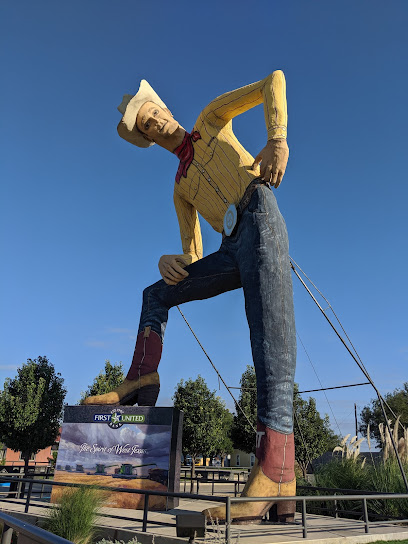
Old West Stables
Experience the heart of Texas at Old West Stables, where adventure and breathtaking beauty meet through unforgettable horseback riding in Palo Duro Canyon.

Palo Duro Canyon
Explore Palo Duro Canyon, Texas's stunning natural wonder with breathtaking views, thrilling trails, and rich geological history perfect for all outdoor enthusiasts.

Palo Duro Canyon Jeep and Horseback Rides
Discover the breathtaking beauty of Palo Duro Canyon with thrilling Jeep and horseback rides, perfect for adventure seekers and nature lovers alike.

The Big Cave at Palo Duro Canyon State Park
Discover the stunning natural beauty of The Big Cave at Palo Duro Canyon State Park, a geological treasure in Texas showcasing breathtaking landscapes and outdoor adventures.

Mack Dick Group Pavilion
Discover the breathtaking Mack Dick Group Pavilion in Palo Duro Canyon, a stunning venue for events and gatherings amidst Texas's natural beauty.

Unmissable attractions to see
Caprock Canyons State Park & Trailway
Explore the breathtaking landscapes of Caprock Canyons State Park & Trailway, a premier destination for outdoor adventures and stunning natural beauty in Texas.

Visitor Center at Palo Duro Canyon State Park
Discover the heart of Palo Duro Canyon at its Visitor Center, where nature meets culture in Texas's second-largest canyon.

The Lighthouse Rock
Explore the breathtaking Lighthouse Rock in Palo Duro Canyon, a stunning hiking area perfect for nature lovers and adventure seekers.

Palo Duro Canyon Jeep and Horseback Rides
Discover the breathtaking landscapes of Palo Duro Canyon through exhilarating jeep and horseback rides in Texas's stunning natural wonder.

The Big Cave at Palo Duro Canyon State Park
Discover the awe-inspiring Big Cave at Palo Duro Canyon State Park, a natural wonder showcasing stunning geological formations and rich history.

Essential places to dine
Feldman's Wrong Way Diner
Discover the charm of American dining at Feldman's Wrong Way Diner in Canyon, Texas – where comfort food meets cozy ambiance.

Palo Duro Trading Post
Discover unique souvenirs and local art at Palo Duro Trading Post—your gateway to authentic Texas treasures.

McDonald's
Discover quick meals and familiar flavors at McDonald's in Canyon, TX – your ideal stop for fast food while exploring!

Best Western Palo Duro Canyon Inn & Suites
Discover comfort and convenience at Best Western Palo Duro Canyon Inn & Suites - your ideal base for exploring Texas' stunning Palo Duro Canyon.
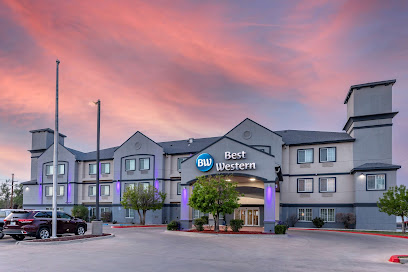
Buff's
Experience authentic Texan hospitality at Buff's in Canyon—a favorite spot for comfort food lovers seeking delicious meals at affordable prices.

Holiday Inn Express & Suites Canyon, an IHG Hotel
Experience comfort at Holiday Inn Express & Suites Canyon - your gateway to explore Texas' stunning Palo Duro Canyon.

Mickey's Place
Experience authentic Texan flavors at Mickey's Place in Canyon - where every meal tells a story.

Hil's Burgers
Discover delicious burgers at Hil's Burgers in Canyon, Texas – where flavor meets affordability in a cozy atmosphere.

Palo Duro RV Park
Experience nature's masterpiece at Palo Duro RV Park, your perfect retreat near Texas's stunning canyon landscapes.

The Big Cave at Palo Duro Canyon State Park
Discover breathtaking views and rich geological history at The Big Cave in Palo Duro Canyon State Park – a must-visit destination for nature lovers.

The Roadrunner Tiny Cabin at Palo Duro Canyon
Experience serenity and adventure at The Roadrunner Tiny Cabin nestled in the stunning landscapes of Palo Duro Canyon.

Palo Duro Glamping
Discover luxurious camping at Palo Duro Glamping - your serene retreat in Texas' breathtaking canyon landscape.

Durango Cabin at Doves Rest
Discover serenity at Durango Cabin in Canyon, Texas – your perfect escape into nature's embrace with modern comforts.
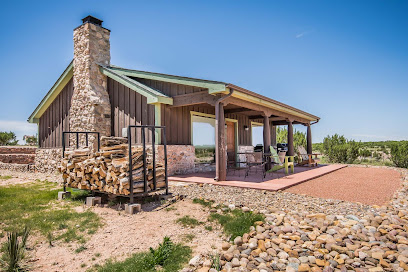
Nocona Lodge at Palo Duro Canyon
Discover unparalleled comfort amidst the stunning landscapes of Palo Duro Canyon at Nocona Lodge – your serene getaway in Texas.

Markets, malls and hidden boutiques
Palo Duro Canyon State Park
Explore the stunning landscapes and rich heritage of Palo Duro Canyon State Park, Texas' second-largest canyon, perfect for outdoor adventures and nature lovers.

Walmart Supercenter
Explore the Walmart Supercenter in Canyon, Texas, the ultimate shopping destination for all your travel essentials and local finds.

United Supermarkets
Explore local flavors and fresh produce at United Supermarkets, a cherished grocery store in Canyon, Texas, perfect for tourists seeking culinary delights.

Best Western Palo Duro Canyon Inn & Suites
Discover comfort at Best Western Palo Duro Canyon Inn & Suites, your gateway to stunning landscapes and local charm in Canyon, Texas.

Visitor Center at Palo Duro Canyon State Park
Explore the Visitor Center at Palo Duro Canyon State Park for an unforgettable introduction to Texas's stunning natural landscapes and rich cultural heritage.

Sad Monkey Mercantile
Explore Sad Monkey Mercantile: A unique general store near Palo Duro Canyon, offering local treasures and artisan finds in a cozy setting.

Hampton Inn & Suites Canyon
Experience comfort and hospitality at Hampton Inn & Suites Canyon, your gateway to the wonders of Texas Panhandle.

Palo Duro Canyon Jeep and Horseback Rides
Experience the stunning beauty of Palo Duro Canyon through unforgettable Jeep and horseback adventures in the heart of Texas.

Palo Duro Canyon Outfitters & Bike Co.
Discover the best gear and expert advice for exploring Palo Duro Canyon at Palo Duro Canyon Outfitters & Bike Co. in Canyon, Texas.

The Roadrunner Tiny Cabin at Palo Duro Canyon
Discover the unique charm of The Roadrunner Tiny Cabin at Palo Duro Canyon, where comfort meets the stunning landscapes of Texas's second-largest canyon.

Thompson's
Discover unique souvenirs and local treasures at Thompson's Gift Shop in Canyon, Texas, the perfect stop for delightful keepsakes.

Palo Duro Canyon
Explore the stunning landscapes and rich heritage of Palo Duro Canyon, Texas' breathtaking natural wonder and outdoor adventure haven.
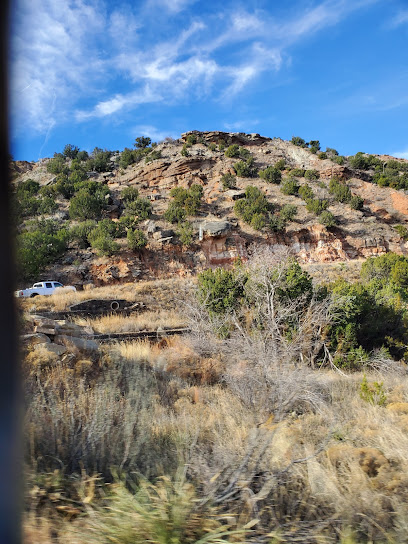
Partners in Palo Duro
Explore a unique gift shop near Palo Duro Canyon, showcasing local art and handcrafted souvenirs that celebrate Texas culture.

The Shop in Canyon
Discover The Shop in Canyon for top-notch car repair services while exploring the beauty of Texas.

Palo Duro Trading Post
Experience the local culture and charm at Palo Duro Trading Post, your gateway to the stunning beauty of Palo Duro Canyon.

Essential bars & hidden hideouts
Palo Duro Canyon State Park
Explore the stunning landscapes and rich history of Palo Duro Canyon State Park, Texas' breathtaking natural wonder and outdoor adventure destination.

Palo Duro Trading Post
Discover unique souvenirs and local art at Palo Duro Trading Post, your gateway to the beauty of Palo Duro Canyon.
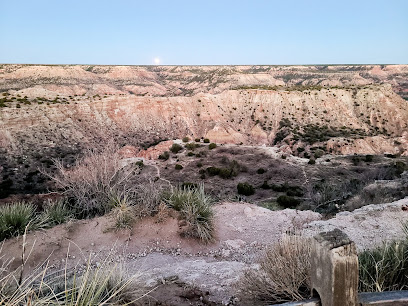
Best Western Palo Duro Canyon Inn & Suites
Discover the perfect blend of comfort and adventure at the Best Western Palo Duro Canyon Inn & Suites, your gateway to Texas's stunning canyon landscapes.
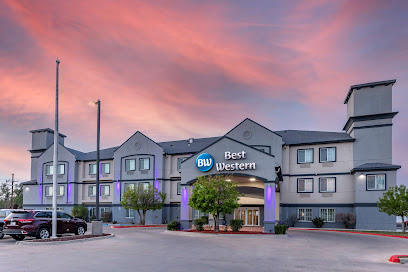
Visitor Center at Palo Duro Canyon State Park
Discover the breathtaking beauty and rich history of Palo Duro Canyon at the Visitor Center, your gateway to adventure in Texas's second-largest canyon.

The Big Cave at Palo Duro Canyon State Park
Explore the breathtaking Big Cave at Palo Duro Canyon State Park, a geological marvel with stunning views and rich history in Texas.

The Roadrunner Tiny Cabin at Palo Duro Canyon
Experience tranquility and adventure at The Roadrunner Tiny Cabin, nestled in the stunning Palo Duro Canyon, Texas's second-largest canyon.

Palo Duro Canyon
Discover the breathtaking beauty of Palo Duro Canyon, Texas's second-largest canyon, offering outdoor adventures and rich cultural history.

Durango Cabin at Doves Rest
Discover the Durango Cabin at Doves Rest, a serene camping retreat in Canyon, Texas, combining rustic charm with modern comforts and stunning natural beauty.

Local Phrases about Palo Duro Canyon State Park
-
- HelloHowdy
[haw-dee] - GoodbyeSee ya later
[see yuh lay-tur] - YesYup
[yuhp] - NoNah
[nuh] - Please/You're welcomePlease/No problem
[pleez/no prob-lem] - Thank youThank ya
[thank yuh] - Excuse me/SorryPardon me/My bad
[pahr-dun me/my bad] - How are you?Howdy partner?
[haw-dee par-tner?] - Fine. And you?I'm good. How 'bout you?
[ahm gud. How 'bout yuh?] - Do you speak English?Ya speak English?
[yuh speak ing-glish?] - I don't understandI ain't catchin' on
[ah aint ketch-in awn]
- HelloHowdy
-
- I'd like to see the menu, pleaseI reckon I'll take a gander at the menu, if ya don't mind
[ah reckon ahl take uh gan-der at the menu, if yuh don't mind] - I don't eat meatI don't fancy meat
[ah don't fan-see meat] - Cheers!Bottoms up!
[bah-tums up!] - I would like to pay, pleaseI reckon it's time to settle up
[ah reckon its tahm tuh set-tle up]
- I'd like to see the menu, pleaseI reckon I'll take a gander at the menu, if ya don't mind
-
- Help!Git over here quick!
[git oh-ver here kwik!] - Go away!Shoo now!
[shoo now!] - Call the Police!Get the law on 'em!
[get the law on 'em!] - Call a doctor!Get the doc 'round 'ere!
[get the doc 'round 'ere!] - I'm lostI done got turned around
[ah dun got turned a-round] - I'm illI ain't feelin' right
[ah aint feel-in' rite]
- Help!Git over here quick!
-
- I'd like to buy...I reckon I'll take...
[ah reckon ahl take...] - I'm just lookingJus' browsin'
[jus' brow-sin'] - How much is it?What's the damage?
[whats the dam-ij?] - That's too expensiveThat's a mite pricey
[thats uh mite pry-see] - Can you lower the price?Can ya do me a favor 'n cut the price?
[can yuh do me uh fay-vur 'n cut the pryce?]
- I'd like to buy...I reckon I'll take...
-
- What time is it?What's the hour?
[whats the ow-er?] - It's one o'clockIt's high noon
[its hi noon] - Half past (10)Ten-thirty
[ten-thur-tee] - MorningMornin'
[morn-in'] - AfternoonAfternoon
[after-noon] - EveningEvenin'
[even-in'] - YesterdayYest'day
[yes-t'day] - TodayToday
[to-day] - TomorrowTomorrer
[to-mor-rur] - 1One
[wun] - 2Two
[too] - 3Three
[three] - 4Four
[four] - 5Five
[five] - 6Six
[six] - 7Seven
[sev-en] - 8Eight
[ate] - 9Nine
[nine] - 10Ten
[ten]
- What time is it?What's the hour?
-
- Where's a/the...?Where's the...?
[wheres the...?] - What's the address?What's the loc?
[whats the lok?] - Can you show me (on the map)?Can ya point it out (on the map)?
[can yuh point it out (on the map)?] - When's the next (bus)?When's the next stage?
[whens the next stayj?] - A ticket (to ....)A pass (to ....)
[uh pass (to ....)]
- Where's a/the...?Where's the...?
History of Palo Duro Canyon State Park
-
Palo Duro Canyon, often referred to as the 'Grand Canyon of Texas', was formed over millions of years through erosion by the Prairie Dog Town Fork of the Red River. The canyon is approximately 120 miles long, 20 miles wide, and 800 feet deep, making it the second largest canyon in the United States. Layers of colorful rock reveal a geological history that spans millions of years.
-
Before European settlers arrived, the Palo Duro Canyon was home to various Native American tribes, including the Apache, Comanche, and Kiowa. These tribes utilized the canyon for its resources, taking advantage of its natural protection, abundant wildlife, and water supply from the Red River.
-
In the late 16th century, Spanish explorers, including Francisco Vásquez de Coronado, ventured into the region in search of the fabled Seven Cities of Gold. While they did not find the riches they sought, their expeditions marked the beginning of European interest in the area.
-
One of the most significant historical events in the canyon's history occurred in 1874 during the Red River War. Colonel Ranald S. Mackenzie led U.S. troops against the Comanche, Kiowa, Southern Cheyenne, and Arapaho tribes in the Battle of Palo Duro Canyon. The U.S. forces destroyed the Native American villages and captured their horses, effectively ending the tribes' resistance and leading to their relocation to reservations.
-
In the 1870s, the legendary cattleman Charles Goodnight established the JA Ranch in the Palo Duro Canyon. Goodnight, along with his partner John Adair, utilized the canyon's natural resources to create one of the most successful cattle operations in Texas. The JA Ranch played a crucial role in the development of the cattle industry in the American West.
-
Palo Duro Canyon State Park was officially opened to the public in 1934. The Civilian Conservation Corps (CCC) played an instrumental role in developing the park's infrastructure, building roads, trails, and facilities that are still in use today. The park preserves the natural beauty and historical significance of the canyon for future generations.
-
Today, Palo Duro Canyon State Park is a popular destination for outdoor enthusiasts and history buffs alike. The park hosts the annual outdoor musical drama 'Texas', which tells the story of the area's history and culture. Visitors can explore the canyon through various activities such as hiking, horseback riding, and camping, all while appreciating the rich cultural heritage of the region.
Palo Duro Canyon State Park Essentials
-
Palo Duro Canyon State Park is located in the Texas Panhandle, approximately 25 miles south of Amarillo. The nearest major airport is Rick Husband Amarillo International Airport (AMA), which is served by several major airlines. From the airport, you can rent a car and drive to the park, which takes about 30 to 40 minutes. Alternatively, you can take a taxi or arrange for a shuttle service. If driving from other parts of Texas, the park is accessible via Interstate 27 and State Highway 217.
-
The best way to explore Palo Duro Canyon State Park is by car, as the park is expansive and public transportation within the park is limited. Car rentals are available at Rick Husband Amarillo International Airport and in the city of Amarillo. Once inside the park, there are several scenic drives and parking areas near major trailheads. Biking is also a popular option for getting around, and there are designated bike trails. For those who prefer not to drive, guided tours are available that provide transportation within the park.
-
The official currency in the United States is the US Dollar (USD). Most establishments in and around Palo Duro Canyon State Park accept credit and debit cards, including the park entrance fee. However, it is advisable to carry some cash, especially for small purchases or in case of technical issues with card payment systems. ATMs are available in nearby Amarillo, but there are no ATMs within the park itself.
-
Palo Duro Canyon State Park is generally safe for tourists. However, it is essential to take standard safety precautions, such as staying on marked trails, carrying sufficient water, and avoiding hiking alone, especially during extreme weather conditions. There are no specific high-crime areas targeting tourists, but always be vigilant with your belongings. Wildlife encounters are possible; maintain a safe distance from animals and never feed them.
-
In case of an emergency, dial 911 for immediate assistance. The park has several ranger stations where you can seek help if needed. It is recommended to carry a first aid kit and familiarize yourself with the nearest medical facilities; the closest hospital is in Canyon, Texas, about 12 miles from the park. Always let someone know your plans and expected return time when hiking or exploring remote areas of the park.
-
Fashion: Do wear comfortable, weather-appropriate clothing and sturdy hiking boots. Layers are advisable due to temperature variations. Avoid wearing flip-flops or open-toed shoes. Religion: Do respect the natural environment and any cultural heritage sites within the park. Public Transport: Do use designated parking areas and follow park rules for vehicle use. Greetings: Do greet fellow hikers and park staff with a friendly hello. Eating & Drinking: Do bring your own food and water, as there are limited dining options within the park. Always pack out all trash and leave no trace.
-
To experience Palo Duro Canyon State Park like a local, consider visiting during the off-season to avoid crowds and enjoy a more peaceful experience. Attend the 'Texas' musical drama performed in the park's amphitheater during the summer months for a unique cultural experience. Early morning or late afternoon hikes provide the best lighting for photography and more comfortable temperatures. Don't miss the Lighthouse Trail, one of the park's most iconic hikes, offering stunning views of the canyon.
Trending Landmarks in Palo Duro Canyon State Park
-
Panhandle-Plains Historical Museum
-
Palo Duro Trading Post
-
Best Western Palo Duro Canyon Inn & Suites
-
TEXAS Outdoor Musical
-
Visitor Center at Palo Duro Canyon State Park
-
Palo Duro Riding Stables
-
The Lighthouse Rock
-
Palo Duro Creek Ranch
-
Palo Duro RV Park
-
Tex Randall Statue
-
Old West Stables
-
Palo Duro Canyon
-
Palo Duro Canyon Jeep and Horseback Rides
-
The Big Cave at Palo Duro Canyon State Park
-
Mack Dick Group Pavilion
Nearby Cities to Palo Duro Canyon State Park
-
Things To Do in Lubbock
-
Things To Do in Lawton
-
Things To Do in Roswell
-
Things To Do in Abilene
-
Things To Do in Midland
-
Things To Do in Las Vegas
-
Things To Do in Garden City
-
Things To Do in Dodge City
-
Things To Do in Trinidad
-
Things To Do in Enid
-
Things To Do in La Junta
-
Things To Do in Oklahoma City
-
Things To Do in Moore
-
Things To Do in Norman
-
Things To Do in Edmond










